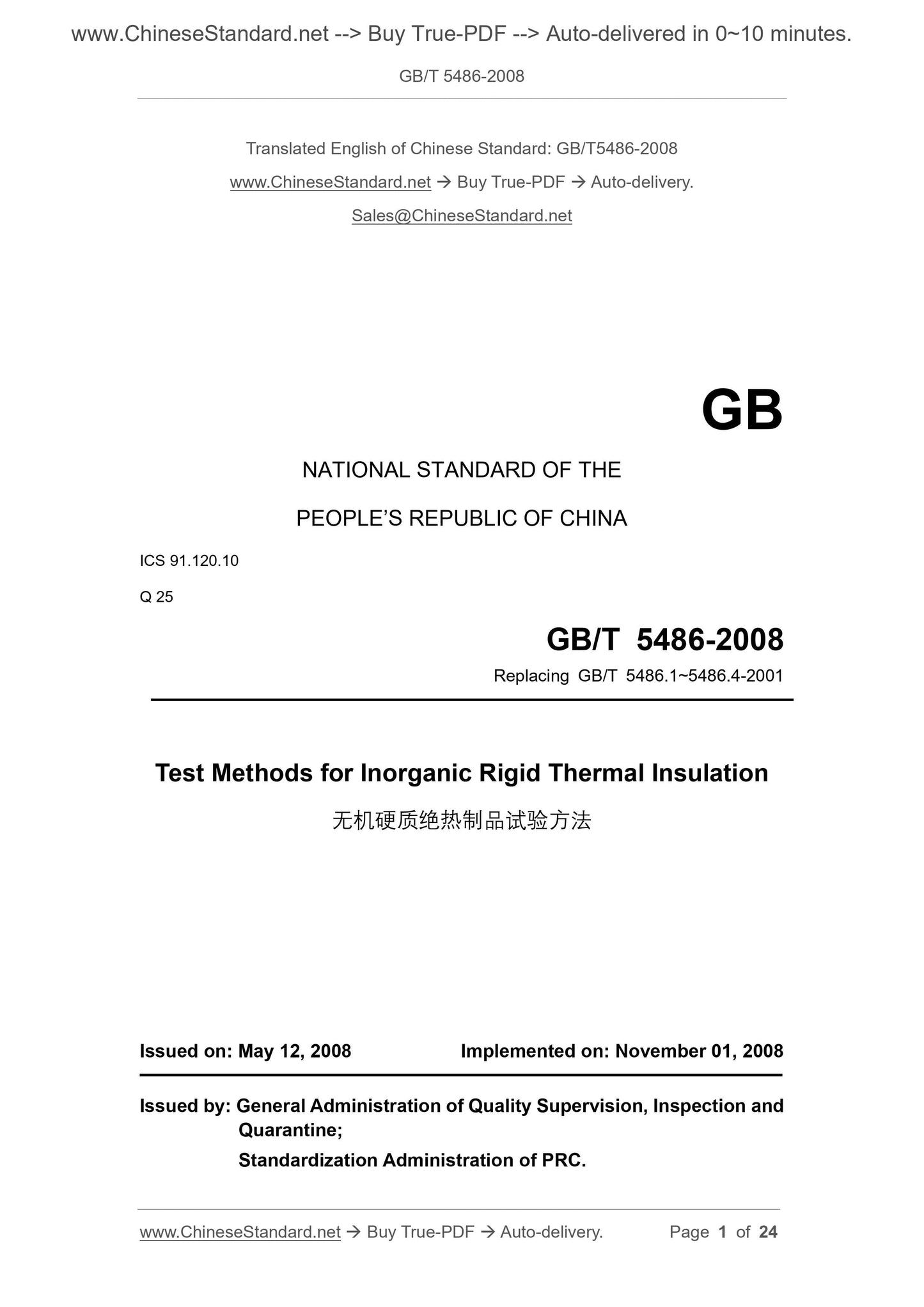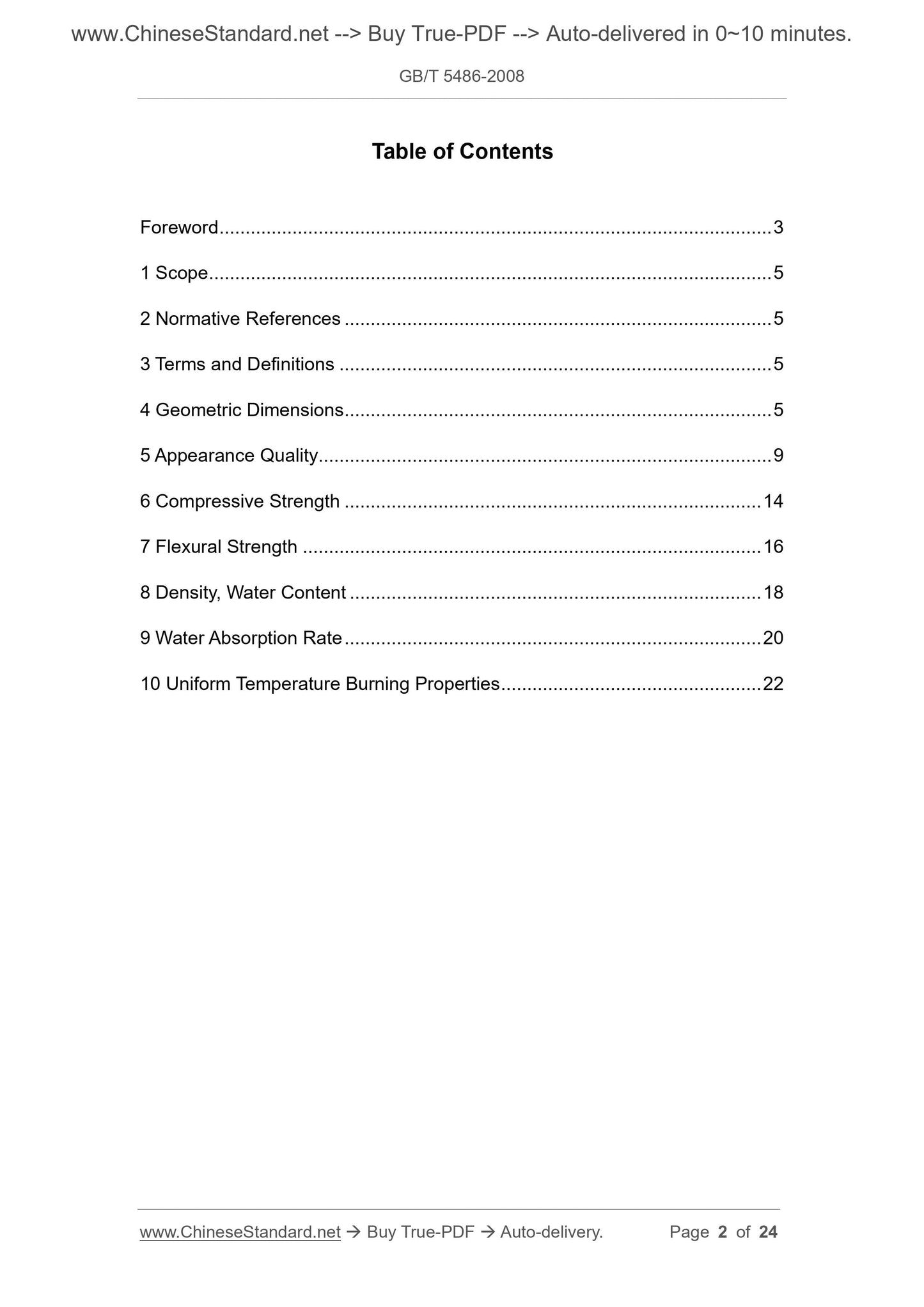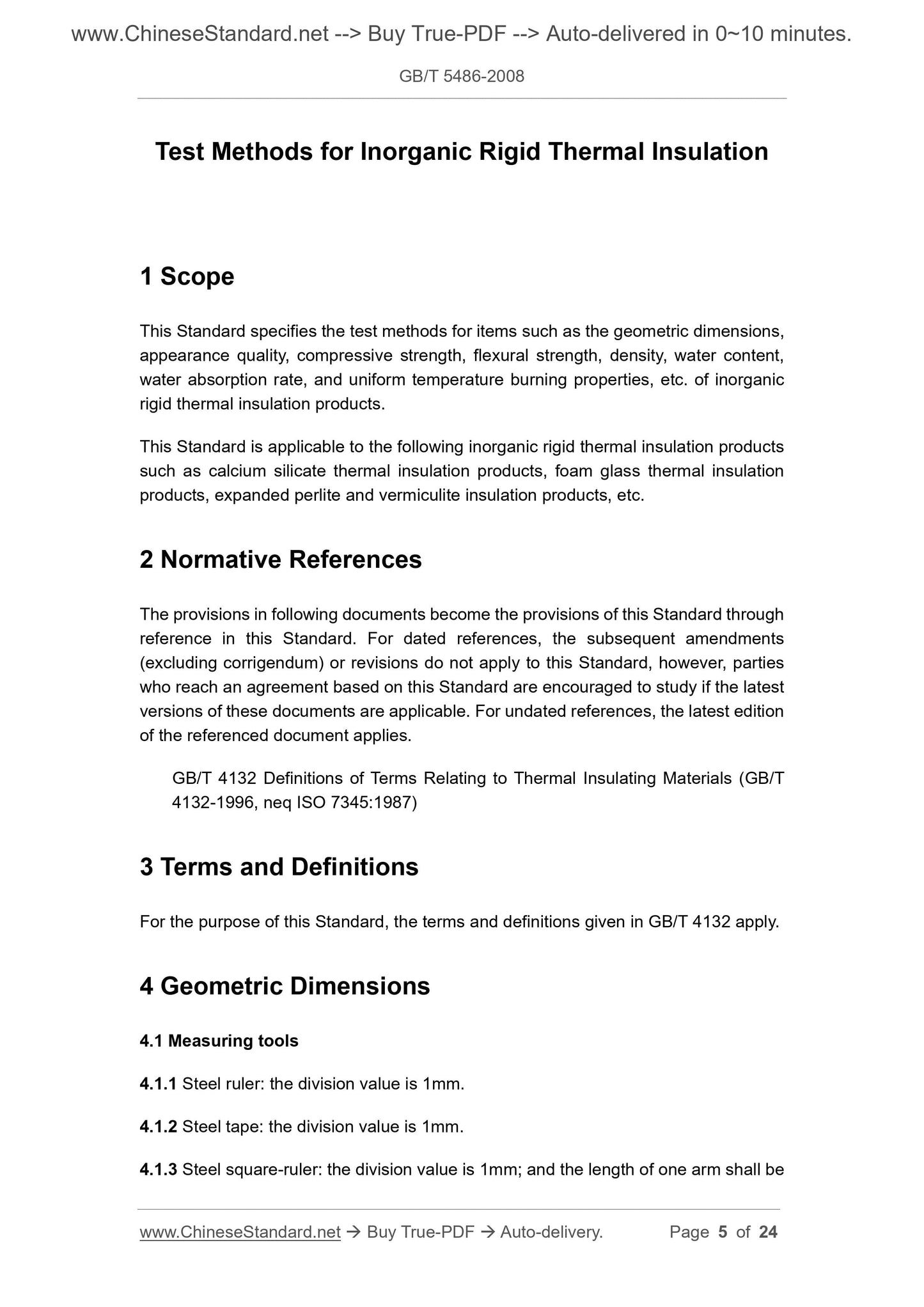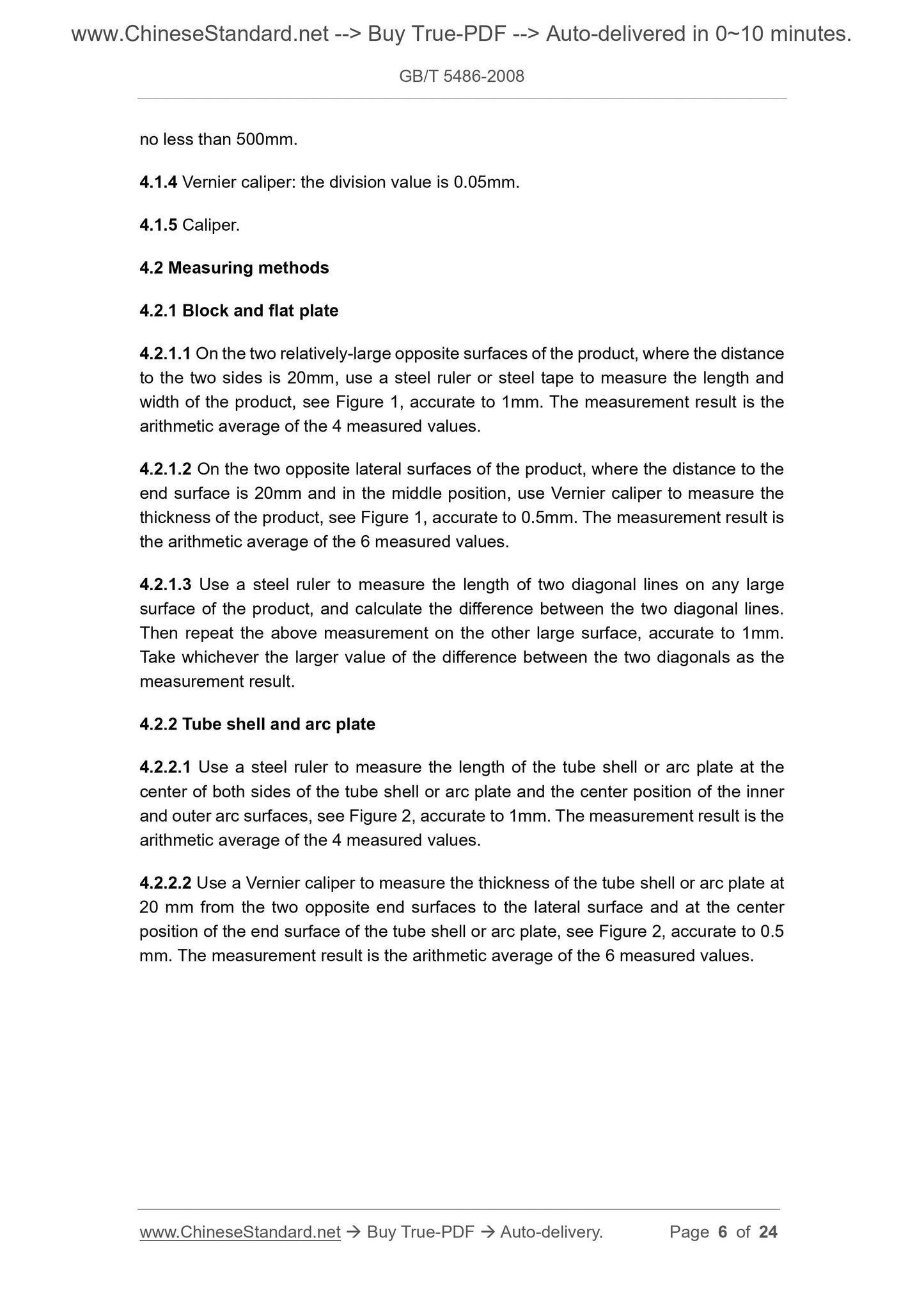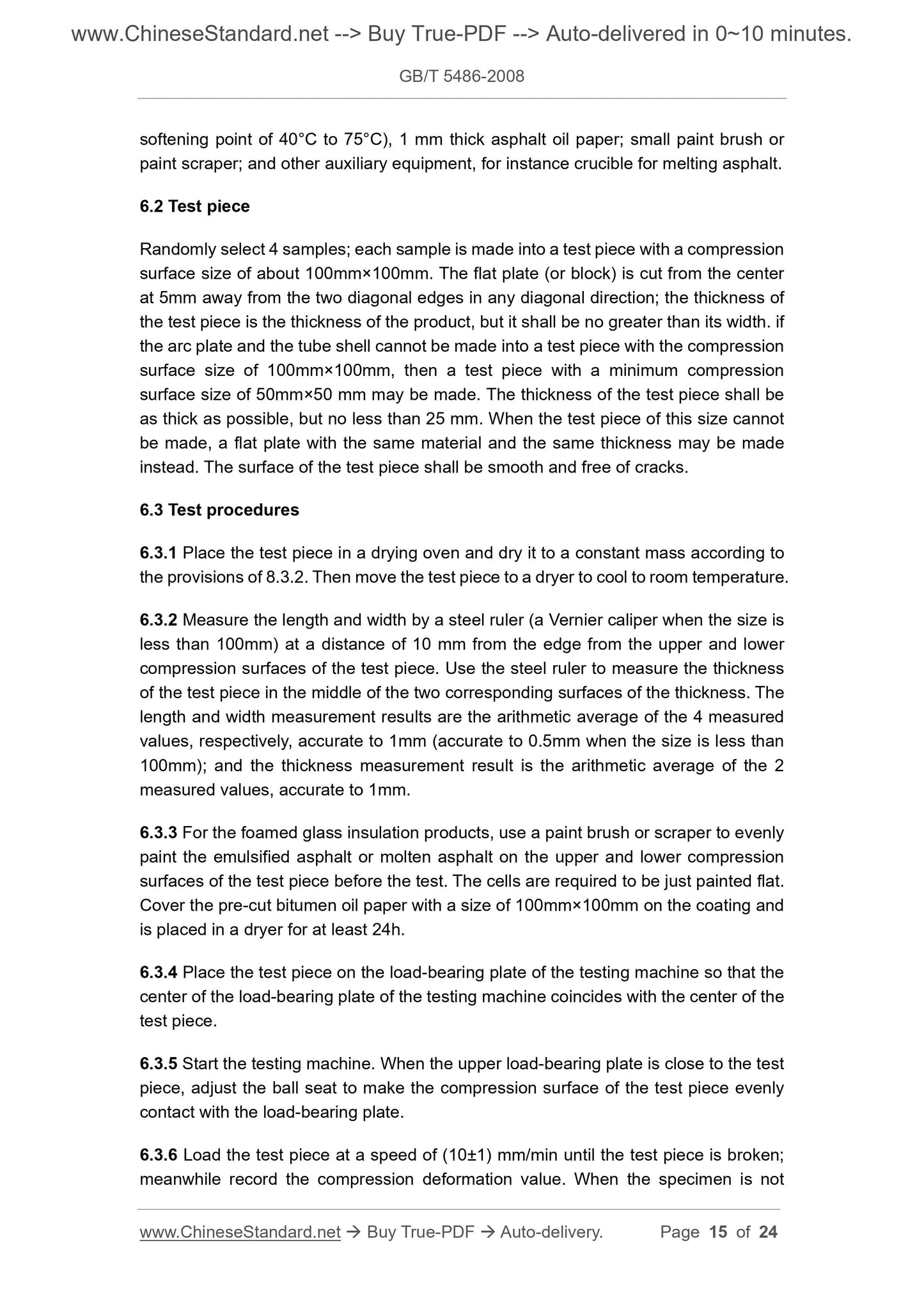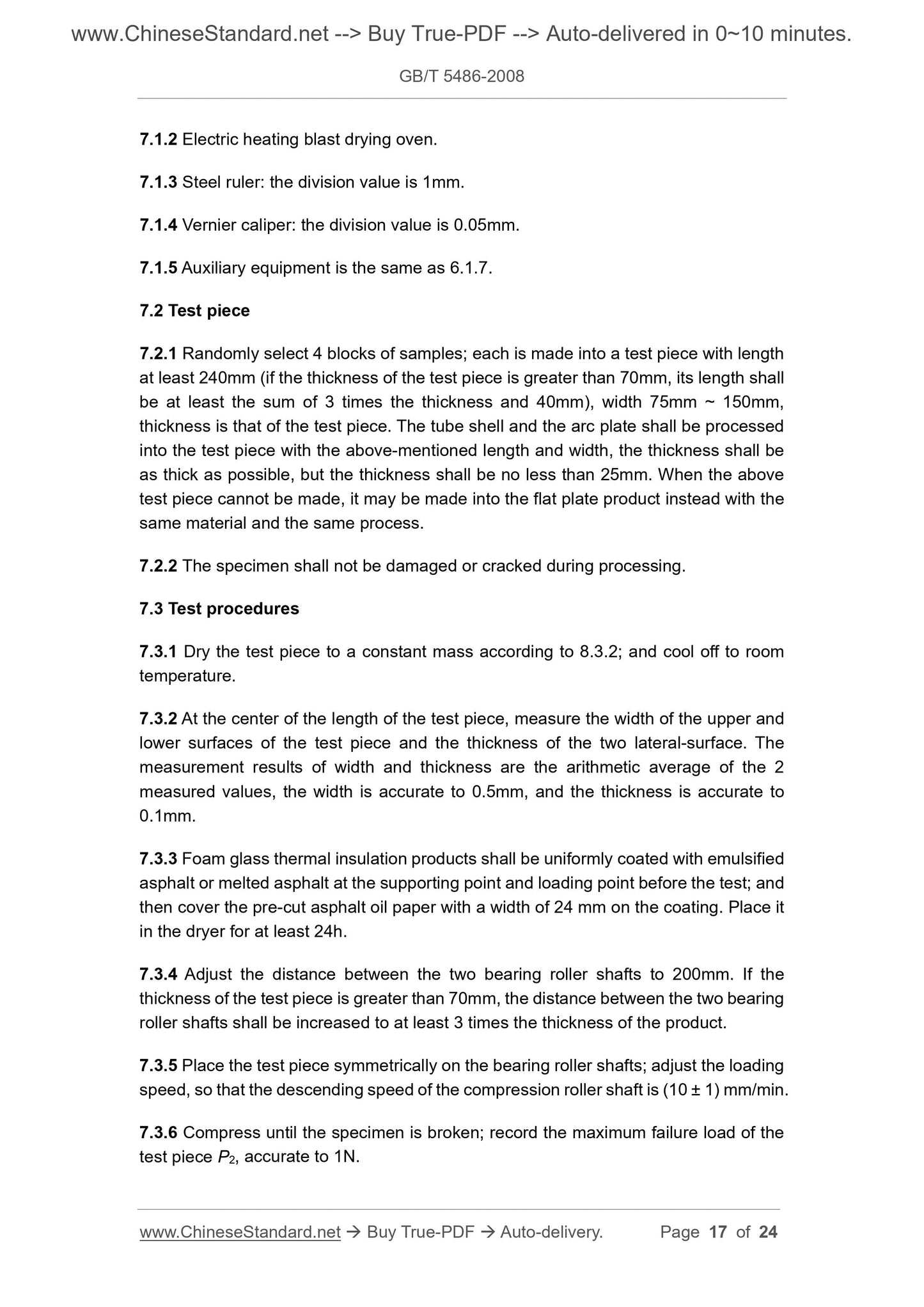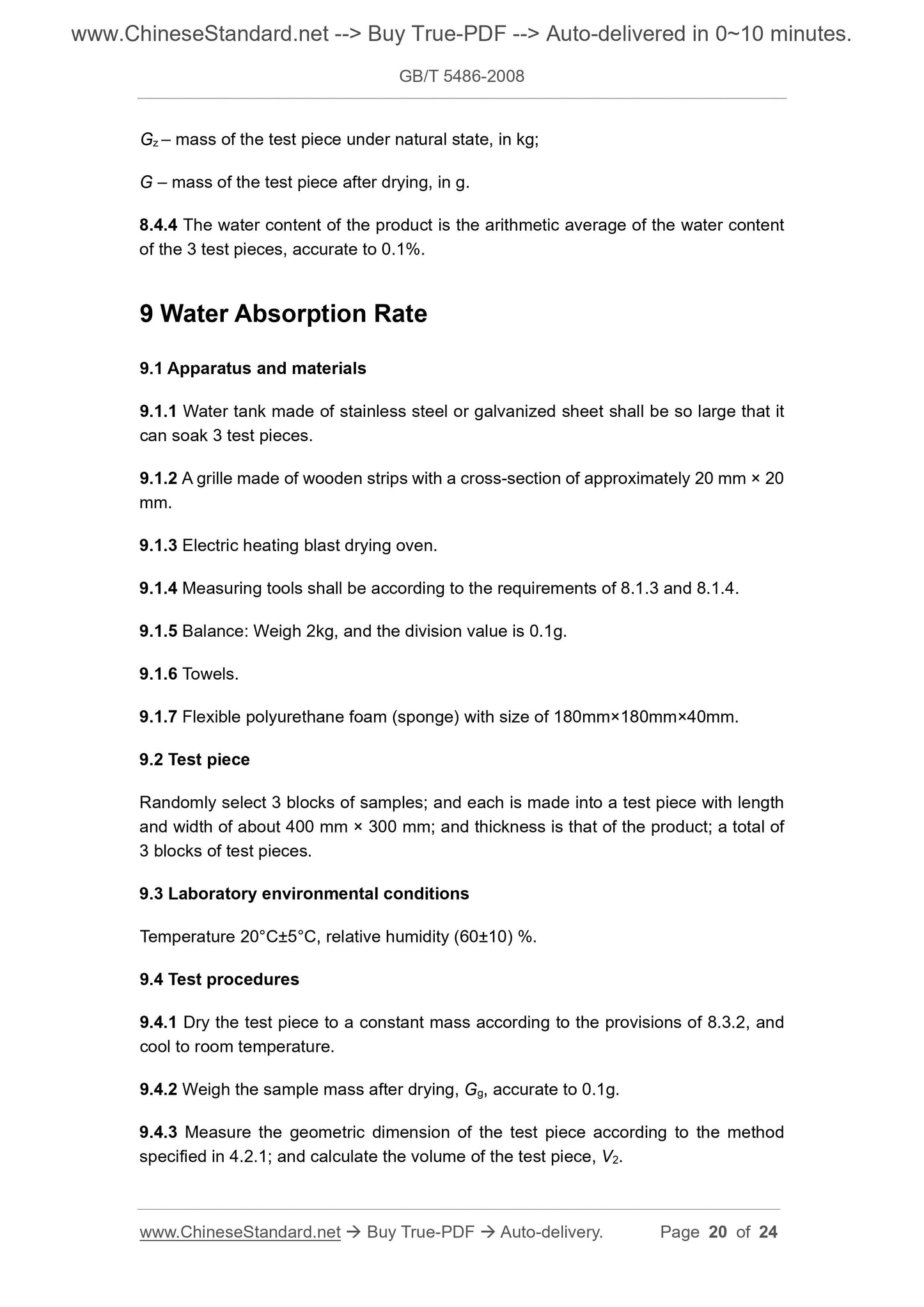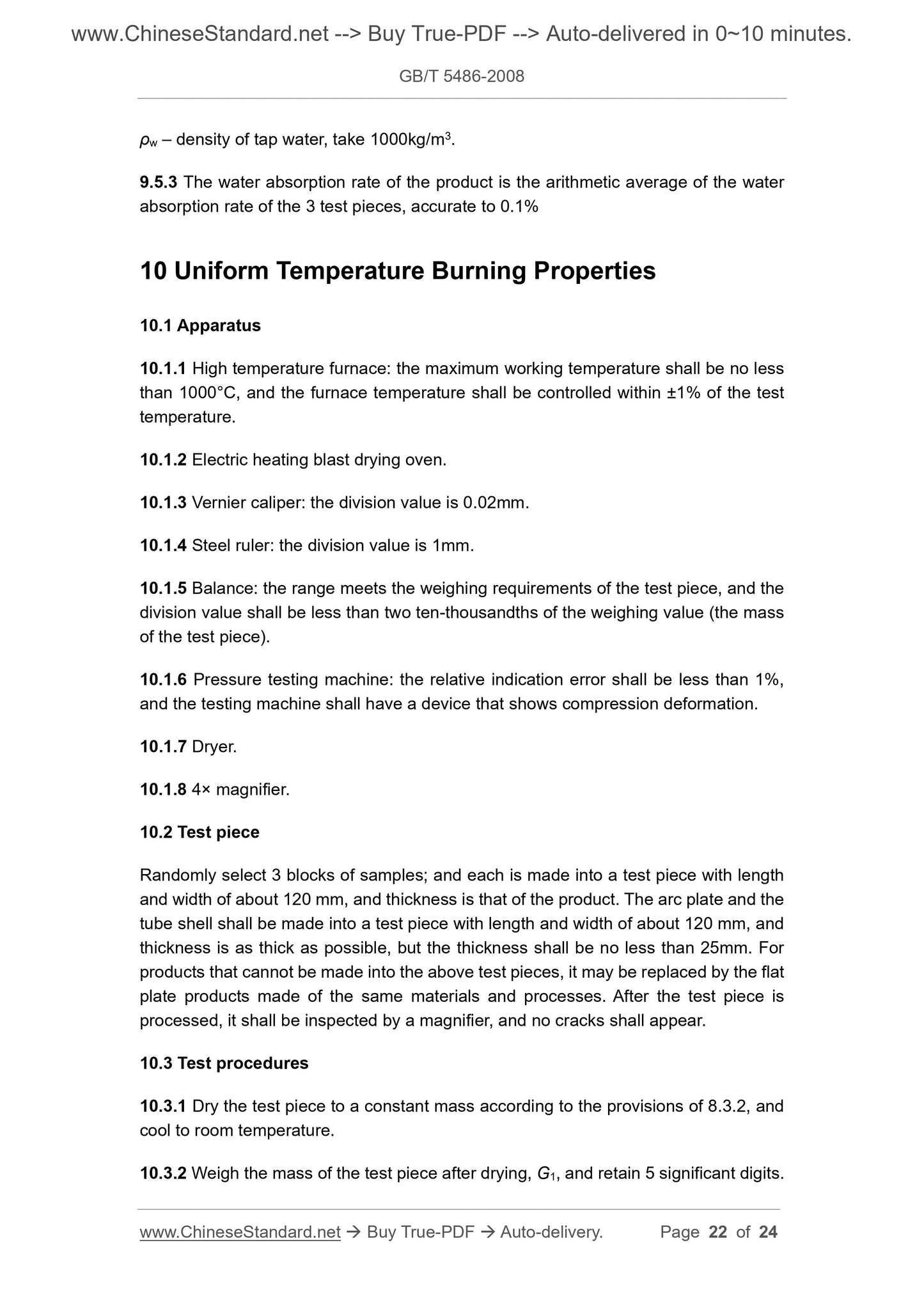1
/
of
8
www.ChineseStandard.us -- Field Test Asia Pte. Ltd.
GB/T 5486-2008 English PDF (GB/T5486-2008)
GB/T 5486-2008 English PDF (GB/T5486-2008)
Regular price
$210.00
Regular price
Sale price
$210.00
Unit price
/
per
Shipping calculated at checkout.
Couldn't load pickup availability
GB/T 5486-2008: Test methods for inorganic rigid thermal insulation
Delivery: 9 seconds. Download (and Email) true-PDF + Invoice.Get Quotation: Click GB/T 5486-2008 (Self-service in 1-minute)
Newer / historical versions: GB/T 5486-2008
Preview True-PDF
Scope
This Standard specifies the test methods for items such as the geometric dimensions,appearance quality, compressive strength, flexural strength, density, water content,
water absorption rate, and uniform temperature burning properties, etc. of inorganic
rigid thermal insulation products.
This Standard is applicable to the following inorganic rigid thermal insulation products
such as calcium silicate thermal insulation products, foam glass thermal insulation
products, expanded perlite and vermiculite insulation products, etc.
Basic Data
| Standard ID | GB/T 5486-2008 (GB/T5486-2008) |
| Description (Translated English) | Test methods for inorganic rigid thermal insulation |
| Sector / Industry | National Standard (Recommended) |
| Classification of Chinese Standard | Q25 |
| Classification of International Standard | 91.120.10 |
| Word Count Estimation | 15,120 |
| Date of Issue | 2008-05-12 |
| Date of Implementation | 2008-11-01 |
| Older Standard (superseded by this standard) | GB/T 5486.1-2001; GB/T 5486.2-2001; GB/T 5486.3-2001; GB/T 5486.4-2001 |
| Quoted Standard | GB/T 4132 |
| Adopted Standard | ASTM C550-2003, NEQ; ASTM C303-2002, NEQ; ASTM C302-1995 (2001), NEQ; ASTM C165-2000, NEQ; ASTM C203-1999; ASTM C356-2003, NEQ |
| Issuing agency(ies) | General Administration of Quality Supervision, Inspection and Quarantine of the People's Republic of China, Standardization Administration of the People's Republic of China |
| Summary | This standard specifies the inorganic rigid thermal insulation geometry, appearance quality, compressive strength, flexural strength, uniform temperature ignition performance test methods and other projects, density, moisture content, absorption. This standard applies to calcium silicate insulation products, foam glass insulation products, expanded perlite and vermiculite insulation products such as inorganic rigid insulation products. |
Share
